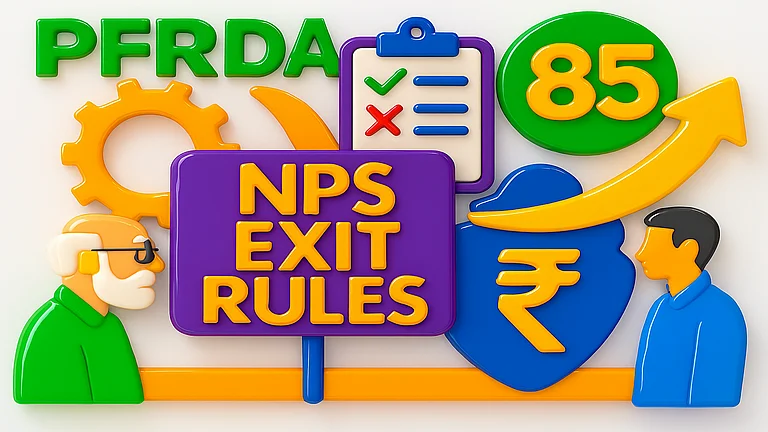
Summary of this article
· PFRDA launches Multi Scheme Framework for NPS subscribers
· Allows 100 per cent equity exposure in investment
· Customised schemes for self-employed, gig workers, and corporate employees
The Pension Fund Regulatory and Development Authority (PFRDA) announced a significant update for the National Pension System (NPS) subscribers, offering them more diversification and the choice to have equity exposure up to 100 per cent. These developments will be effective from October 1, 2025. Per the PFRDA’s circular dated September 16, 2025, pension fund managers will be allowed to offer multiple schemes, more customised ones for investors, by providing 100 per cent exposure to equity.
“Recognizing the need to strengthen India’s pension landscape and to bring within its ambit a wider spectrum of contributors, the PFRDA is pleased to introduce the Multiple Scheme Framework (MSF). This framework has been developed under the enabling provisions of Section 20(2) of the PFRDA Act, 2013, which permits subscribers to access multiple schemes under the NPS. The reform is a significant step forward in expanding the outreach of NPS in the NGS, allowing greater flexibility, more personalized retirement solutions, and alignment with global best practices in pension system design”, reads the circular.
How Will MSF Framework Work?
The MSF framework will allow subscribers to hold multiple schemes across different Central Recordkeeping Agencies (CRAs) under one permanent retirement account number (PRAN). It would enhance investment diversification. The framework allows NPS pension fund managers (PFMs) to design customised schemes for non-government subscribers, such as self-employed individuals, gig workers, and corporate employees.
Scheme Variants: PFMs are allowed to include moderate and high-risk variants where equity allocations can go up to 100 per cent in high-risk options. However, “PFs (Pension Funds) may also, at their discretion, introduce low-risk variants”, reads the circular.
Higher Cost: In terms of the cost, the scheme under MSF will be costlier compared to the existing schemes. The charges for the existing schemes are up to 0.09 per cent of the asset under management (AUM), however, under MSF these can go up to 0.30 per cent of the AUM with an additional 0.10 per cent charge if 80 per cent of the subscribers are new enrolments. The additional 0.10 per cent will be payable only for three years from the date of scheme’s approval or until the scheme enrols 50 lakh subscribers, whichever is earlier.
NPS Infrastructure For MSF: Under the new system, the PAN will serve as the unique identifier and PRAN will work as the operational account. The liability of the NPS back office operation will remain with the CRAs and Trustee Bank will manage the contributions under the new schemes under MSF. And, Point of Presence (PoPs) will upgrade their user interfaces for subscribers’ onboarding, switching, and exit formalities.
News Scheme Asset Classes: The schemes under MSF will be designed within the stipulated asset classes: equity, government, corporate bonds, and alternate assets, but in different combinations than the existing schemes to personalise the product.
Vesting Period: Unlike existing schemes, the vesting period for MSF schemes would be 15 years, subject to the exit at 60 or at retirement. It means that one can exit from the scheme after 15 years, even if it happens before one turns 60.
Taxation: The tax benefits will be available per the Income-tax Act.
Risk-O-Meter: MSF schemes will display a risk-o-meter for the subscribers to understand the risk involved in that particular scheme.
Access To The NPS Account: Subscribers under MSF would be able to access their NPS accounts through the Account Aggregator System.
How Will It Benefit The Subscribers?
The key benefit for the subscribers is the enhanced choice of investment, personalisation, and a low-cost and transparent retirement product. The new framework and features will be effective from October 1, 2025.
The framework ensures that all the new schemes must be compliant with the investment norms and disclosures. They will require prior approval from PFRDA before implementation.
Notably, the existing schemes will be known as Common Schemes.

















